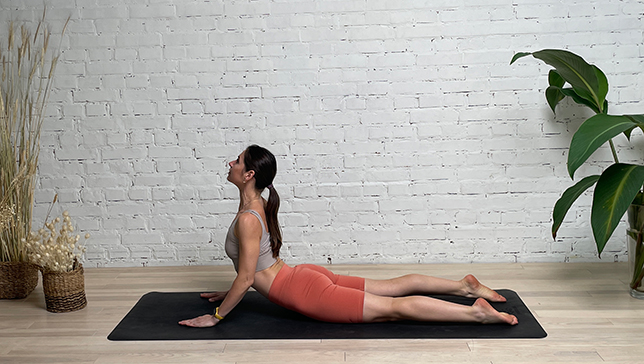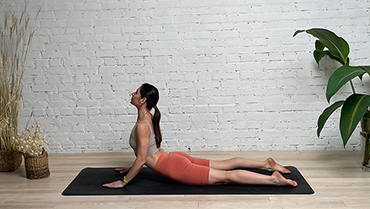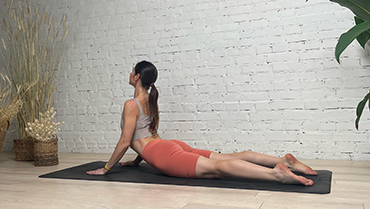Cobra Pose - Bhujangasana

Contents
In Bhujangasana (Cobra Pose), as the name suggests, the body resembles a serpent with its hood raised. This yoga pose is considered a very powerful backward bending yoga pose in Hatha Yoga. Cobra pose comes under the category of ‘lying down on the stomach’ yoga poses.
As this asana is considered powerful like the Cobra snake, a lot of care should be taken while going into the pose and coming out of the pose. Any jerks of the back while going into the pose can cause discomfort to the back and can also cause injury. While releasing too, the body must drop down slowly and not with a jerk.
Cobra Pose is considered a base pose as cobra pose variations can be derived from this pose. Cobra Pose helps boost energy in the body and hence can be included in flow yoga sequences.
Pose Detail
- Body Position: Backbend Yoga Poses, Prone Yoga Poses
- Difficulty: Beginners
- By Type: Chest Opening Yoga Poses, Flexibility Yoga Poses
- By Benefit: Yoga Poses For Digestion, Yoga Poses For Sciatica, Yoga Poses For Weight Loss
Step-by-Step Instructions
Benefits and Contraindications
Strengthens the spine
Stretches chest and lungs, shoulders, and abdomen
Firms the buttocks
Stimulates abdominal organs
Helps relieve stress and fatigue
Opens the heart and lungs
Soothes sciatica
Therapeutic for asthma
Traditional texts say that Bhujangasana increases body heat, destroys disease, and awakens kundalini.
Back injury
Carpal tunnel syndrome
Headache
Pregnancy
Photo poses in different angles


Modifications and Props
- Use a prop. Place a folded blanket or towel under your hips or wrists for extra support.
- Place your forearms on the floor. This puts less pressure on your palms and will help you control your movement better. That way you can focus more on keeping your spine aligned. (This position’s also called Sphinx Pose.)
- If you have trouble lifting your torso away from the ground, don’t worry about lifting off. Instead, focus on involving the necessary muscle groups. Make sure you feel your core, hips, and back muscles engaging first, instead of just trying to lift as high away from the ground as you can.
- If you have a belly, this may be uncomfortable for you. If you have significant issues resting flat on the ground in a prone position on your chest, then I would recommend doing a bridge pose instead.
- To make this pose easier, you can place your hands on a chair or bench with the feet on the floor.
- To deepen this backbend, you can bring the hands slightly more forward and straighten the arms.
Tips
- Take your time in this backbend. Only go so far as it feels comfortable. Keep your belly engaged and lower back long. Maintain the connection with your hips on the floor
- Keep your shoulders relaxed and the base of your neck soft
- Point your elbows backwards rather than out to the sides
- Use your back muscles to lift your torso off the ground. Putting too much pressure on your hands and wrists can increase of a strain or sprain.
- Your feet should be at least hip-width apart. This puts less pressure on your lower back.
- Avoid putting too much pressure on one area of your back. Instead, try to evenly distribute the stretch across your spine.
Frequently Asked Questions
Variations
- Snake Pose
- Sphinx Pose
- Crocodile Pose On Elbows
- Low Cobra Pose with elbows bent
Top Preparatory Poses
- Cat Pose
- Cow Pose
- Gate Pose
- Plank Pose
- Four Limbed Staff Pose
- Eight Limbed Pose